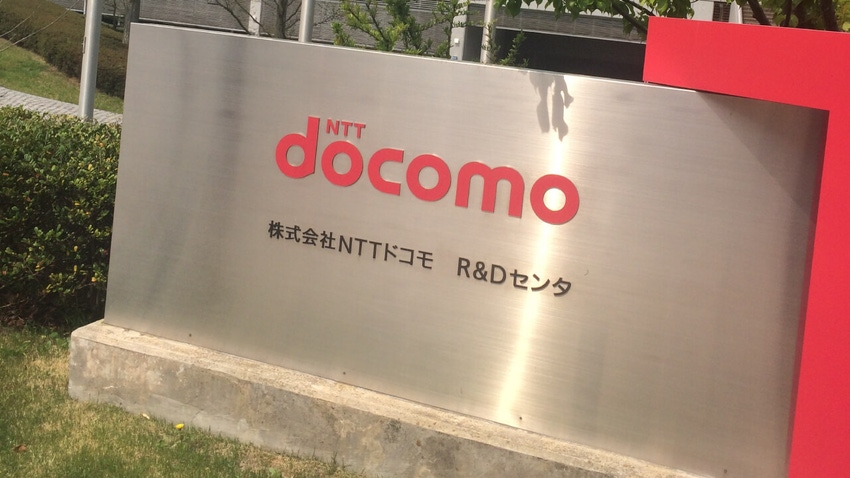NTT Docomo and NEC put joint weight behind multivendor open RAN
NTT Docomo and NEC have formed a joint venture to sell their products and expertise in other parts of the world.

Not everyone is into what Nokia might call fake open radio access network (RAN) technology, where baseband and radio come from the same vendor despite the use of open interfaces. As Nokia CEO Pekka Lundmark pointed out on a recent earnings call, Japan's NTT Docomo offers examples of "true" open RAN, situating different vendors on either side of that interface. But the lurch into "single vendor" open RAN by the broader market has probably not helped the Japanese operator's global open RAN ambitions.
Through a venture dubbed OREX, NTT Docomo has pitched itself as systems integrator to the world's telcos, bringing with it a whole menu of open RAN cocktails. Want a dash of Nvidia acceleration in your Intel servers? Or Mavenir's radios combined with Fujitsu's software? NTT Docomo has positioned itself as an expert mixologist, having learned the trade in Japan long before open RAN was a broader thing. Yet it has had little to show for its marketing efforts so far.
Although "field trials" are now happening with Ooredoo, Starhub and Smart, no commercial contracts have yet been signed, said Sadayuki Abeta, NTT Docomo's global head of open RAN solutions, on a call with reporters. Hence news today at MWC that NTT Docomo and Japanese equipment maker NEC have launched a new and currently nameless joint venture that seems designed to provide some oomph for both players.
NEC has also not had the best of experiences in 5G and open RAN so far. It expects an operating loss at its global 5G business of around 10 billion Japanese yen (US$66.7 million) for the current fiscal year ending in March. And while that would be an improvement on the JPY31.1 billion ($207.6 million) loss for the previous year, NEC made aggressive cuts to its sales targets in late 2023. It had originally targeted 5G revenues outside Japan of JPY85.4 billion ($570 million) for the year ending in March 2026. It is now aiming for sales of just JPY31 billion ($206.9 million).
Japan versus the world
Besides selling open RAN equipment and services, the new joint venture aims to handle construction and maintenance for customers. Docomo says it will also be involved in planning initiatives related to its service management and orchestration (SMO) platform – a part of its pitch to other telcos – as well as future RAN software. Furnished with JPY16 billion ($106.8 million) in capital, it will be 66% owned by Docomo, with the rest under NEC's control.
The big sell, according to Abeta, is the combination of Docomo's hands-on experience in Japan, where it has used open RAN for its own network, with NEC's global footprint. Docomo's work on testing and verification could also dovetail with NEC's systems integration expertise.
Yet the arrangement is curious in that it could involve NEC in commercial efforts to promote rival products, such as radios from Fujitsu that are now part of the OREX ecosystem. To some extent, of course, this already happens when technology vendors play systems integrator. Ericsson, notably, may be expected to integrate its software with Fujitsu radios, and not just Ericsson hardware, under the $14 billion contract it signed with AT&T in December. But the Docomo-NEC tie-up does appear to go a step further.
"OREX itself hasn't changed so this joint venture sells a Fujitsu solution, a Mavenir solution, so it's not only limited to an NEC solution," said Abeta. As well as announcing the joint venture, Docomo has just unveiled a whole gamut of new OREX partners, including Amazon Web Services (AWS) on the virtualization platform side plus Arm and Marvell for chip development. NEC's stance on all this as a minority stakeholder in the new joint venture was still shrouded in some mystery at the time of publication.
But the telco appetite for hiring NEComo, or whatever it turns out to be called, will largely depend on the level of interest in building multivendor networks.
"American operators have the big contracts with single vendors, but I don't know that they are focused on single-vendor solutions because they are focused on the vRAN [virtual RAN] solution, and that can add more vendors using the same hardware," said Abeta, answering questions on this issue. "Some of the operators, we heard, are supporting at least two or three vendors."
Another concern for Docomo is that operators view a deal with the company as an additional cost. While it does have an SMO platform it is trying to sell, Docomo is otherwise just a systems integrator marshalling other companies. It may seem like an unnecessary expense when an equipment provider can play the same role. Ericsson, for example, is to provide its own products along with systems integration expertise under its $14 billion AT&T contract.
Fearing a new form of "lock-in" – dependency on a third-party systems integrator, as opposed to a big kit vendor – operators such as the UK's Vodafone prefer to shoulder the burden of systems integration. It's not something most have previously done, though, and Vodafone's cocktail menu remains a short read alongside Docomo's, featuring Samsung's RAN software and radios, Wind River's cloud platform and Dell servers. Mixology isn't easy.
About the Author(s)
You May Also Like












